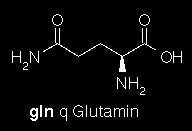Kelly Starett - San Fransisco Crossfit

Hey Kelly,
At the seminar you said no more ibuprofen, so I stopped. But what should I take when the DOMS (Delayed Onset Muscle Soreness) is bad? I foam roll, tennis/lacrosse ball roll, etc... But it only goes so far. Crushing the fish oil as well. ASA (an NSAID by the way) or acetaminophen or just suck it up? (all parentheses are mine)
Thanks
WC
----------------------------------
All right, let's set the record straight about this stuff.
The Disclaimer: Medicine is serious busines. Always follow the advice of your doctor.
Sorted?
Ok. Ibuprofen has no place in the life of the athlete obsessed with chasing performance.
Taking an anti-inflammatory drug of any kind makes tendons and ligaments weaker, and stops muscles from getting stronger.
Is this clear enough? Yes, we used to call it Vitamin I. Yes, we used to say that RICE should have a second "I" in it (Rest, Ice, Ibuprofen, Compression, Elevation).
We used to also do "21's" on back and bi's day too. It's not ok.
Here's the low down. Ibuprofen is an NSAID (Non-Steroidal-Anti-Inflammatory-Drug) which is believed to work through the inhibition of cyclooxygenase (COX), thus inhibiting prostaglandin synthesis. Prostaglandins, are like hormones in that they act as chemical messengers, but do not move to other sites, but work right within the cells where they are synthesized. Prostaglandins are vital mediators of the inflammatory cascade. The swelling and subsequent prostaglandin production signals all of the important cells circulating in your body to come and fix/reinforce the challenged tissues. That's right, all that soreness you feel after Fran is the resultant swelling from all the micro-damage you've done to your muscles. It's this very inflammatory response that is responsible for making you a BETTER ATHLETE. The Worst thing you can do is to go through a horrible workout like Fran and then not reap the resultant gains from the training stimulus.
No good coach should allow their athletes to take ibuprofen at anytime. Even if they are hung over..
Why?
NSAIDs have been shown to delay and hamper the healing in all the soft tissues, including muscles, ligaments, tendons, and cartilage. Anti-inflammatories can delay healing and delay it significantly, even in muscles with their tremendous blood supply. In one study on muscle strains, Piroxicam (an NSAID) essentially wiped out the entire inflammatory proliferative phase of healing (days 0-4). At day two there were essentially no macrophages (cells that clean up the area) in the area and by day four after the muscle strain, there was very little muscle regeneration compared to the normal healing process. (Greene, J. Cost-conscious prescribing of nonsteroidal anti-inflammatory drugs for adults with arthritis. Archives of Internal Medicine. 1992; 152:1995-2002.)
Long term NSAID use is hard on your tissues and directly responsible from some pretty gnarly chronic body issues.
So how do we treat acute inflammatory/inflammation pain?
You know the answer.
Ice. (Maybe a little Tylenol if you really, really need it, it's not an NSAID after all)
But remember, Acetaminophen causes three times as many cases of liver failure as all other drugs combined and is the most common cause of acute liver failure in the United States. Even recommended doses especially combined with even small amounts of alcohol (Yes you Crossfitters) have caused irreversible liver failure. Don't be so cavalier about treating your muscle soreness with drugs. Taking pain meds of any kind is serious.
Can you see the difference between treating pain and treating inflammation? Control swelling and Pain with Ice as seen below, it won't short circuit the way your body actually heals itself and becomes stronger. (Hell, the Ice bath might make you a little stronger too.)

Bask in your soreness!Brag about it at work as your friends help you get up off the toliet. And above all, practice all the recovery tricks you know! These include: Proper nutrition, fluid intake, ice bath, fish oil, active recovery, stretching, massage, etc.
Hell, you can even sneak in another quick workout the next day before the 48 hour soreness beat down really kicks in! Quick, let's do Fight Gone Bad before you get too sore from yesterday's double fran! For example.
Seriously. Knock it off. Get off the Vitamin I.


